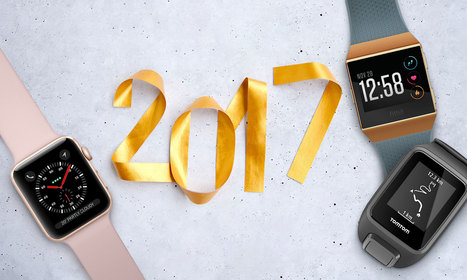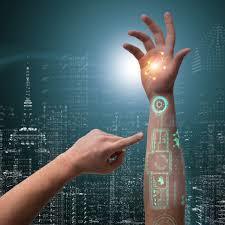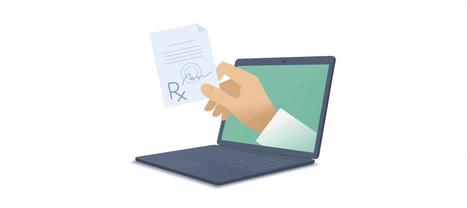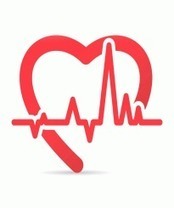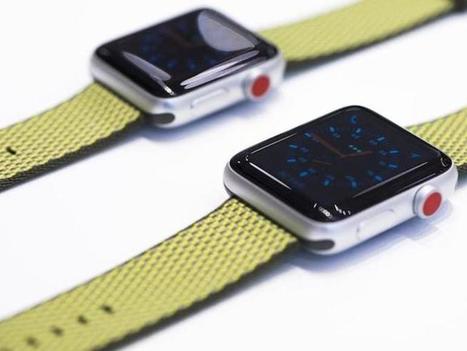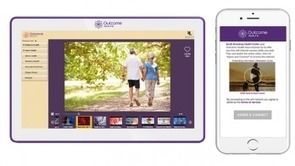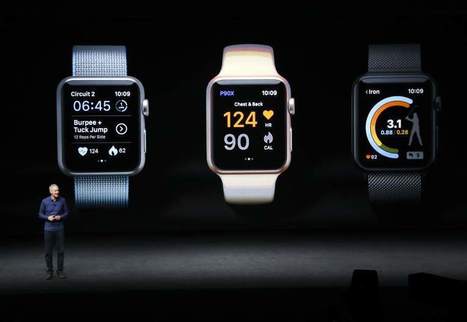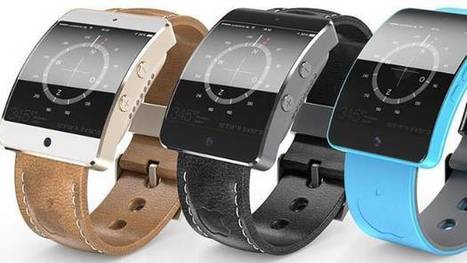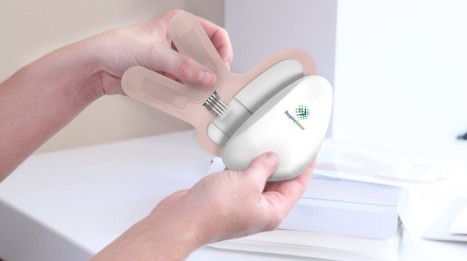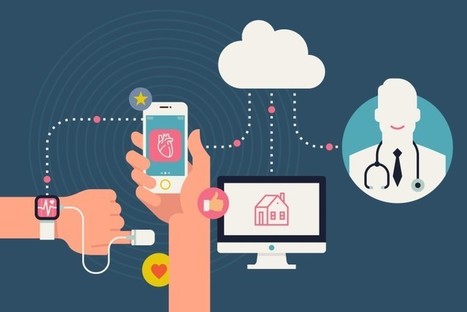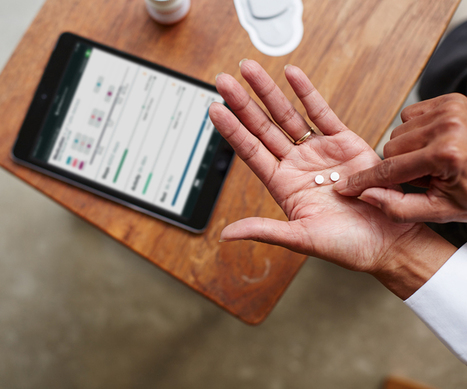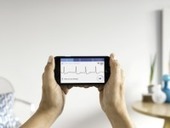 Your new post is loading...
 Your new post is loading...

|
Scooped by
Alex Butler
|
2017 was a year of ups and downs for wearables manufacturers. New products arrived in quick succession – alongside lawsuits and liquidations. Most recently Adidas announced the somewhat surprising news that it is cutting the Digital Sports part of its business, and it’s not the only brand to reassess its place in the wearables market in 2017. Here we take a trip down memory lane, and look forward to 2018. You can find out who the wearable washouts were in 2017, and what we’re hoping to see from the big names, such as Apple and Fitbit, this year.

|
Scooped by
Alex Butler
|
Until now, measuring a person’s sleep was an arduous, complicated process. Patients have been required to go to a sleep lab, where a team of scientists and physicians used a whole host of technologies to capture sleep — all while the participants attempted to nod off in a decidedly unnatural environment. This method is extremely costly and time-consuming, and might not reflect how sleep happens in a natural setting. But one new finding could spell the end of difficult sleep studies.As published in the journal Current Biology, researchers developed a method which allowed them to accurately capture sleep, gathering detailed information about human sleep for long periods of time while participants were at home. Not only is this method cheaper and easier for both patients and researchers; it is the first time that it will be possible to objectively measure the realistic sleep habits and sleep quality of large numbers of people.

|
Scooped by
Alex Butler
|
The FDA has released a range of decisions regarding the agency's role in regulating digital health technologies since Scott Gottlieb, MD, assumed the role of commissioner in May.Here are three highlights from the FDA's year in digital health.

|
Scooped by
Alex Butler
|
Apple is working on new technology for the Apple Watch that would let the device monitor a wearer's heart similar to a clinical-grade electrocardiogram, Bloomberg's Alex Webb reports.Apple is still testing the feature and it may not be released at all, according to the report. The advanced Apple Watch would reportedly require the user to grip the outside of the Apple Watch, which would send an electrical current through the body to accurately monitor the heart's condition.

|
Scooped by
Alex Butler
|
Every year it seems like Apple makes more and more moves in the healthcare space, and 2017 was no different. From multiple health-related Apple Watch updates and features to a clinical study to multiple healthcare hires and acquisitions, the company continued to prove its interest in becoming, if not a healthcare company, a consumer company with plenty of healthcare interests.

|
Scooped by
Alex Butler
|
Introducing wearables in orthopedics – Hospital for Special Surgery's Dr. Stephen Lyman explains howBy Mackenzie Garrity | December 19, 2017As technology and devices evolve, physicians continue to look for inventive ways to continuously receive feedback on a patient's recovery.Stephen Lyman, PhD, an associate scientist at New York City-based Hospital for Special Surgery explains how combining wearables and telehealth in orthopedics can benefit physicians and patients.

|
Scooped by
Alex Butler
|
Patient portals — secure websites that give people access to medical information — now let you easily check doctor visit summaries, test results, prescriptions, and other personal data, all with a few clicks of a mouse. Some patient portals also give you the ability to directly email questions to your doctor, fill out necessary forms, pay bills, or schedule future appointments. Convenient!More and more health-care providers are beginning to offer patient portals. The Office of the National Coordinator for Health Information Technology (ONC), which is part of the U.S. Department of Health and Human Services (HHS), reports that 64 percent of hospitals had some type of online patient portal in 2014. Another survey found that, in 2016, 58 percent of health-care providers were offering portals.

|
Scooped by
Alex Butler
|
Technological progress over the years have brought about a sea-change in the way in which patients are diagnosed and treated. They have also helped in improving the training procedure of medical practitioners. While CT scans and wearable technology are some of the new technologies that have already redefined the medical landscape, the futuristic technologies of augmented reality (AR) and virtual reality (VR) are well on their way to bring about further seismic shift in the domain.Put simply, augmented reality (AR) helps display real-time digital information and media, such as videos and 3D models, leveraging the camera view of smartphones, PCs, and tablets, or using wearable tech, namely wearable glasses and viewfinder. Virtual reality (VR), on the hand, builds a 3D world completely detaching the user from reality.

|
Scooped by
Alex Butler
|
The proliferation of wearables for health and wellness, and the need for more data about the current and future condition of individuals and patients, are key factors propelling market growth. Future growth opportunities focus on the commercialization and embedding of wearables in skin patches, clothing, and electronic skins.Frost & Sullivan's research, "Future Wearables in Healthcare -- R&D Portfolio Areas and Technology Roadmapping," assessed market dynamics, research and development (R&D) opportunities, adoption drivers, technology trends, and challenges for healthcare wearable devices. It identified developers in diverse areas such as electronic skin, smart gloves, glucose sweat sensors, wearable stethoscopes, asthma monitoring patches, smart bandages, smart clothing, and electrocardiogram monitoring.

|
Scooped by
Alex Butler
|
A new mHealth study of more than 1,000 people with diabetes finds that simple text messages work better than personalized messages in promoting care management – but the same can’t be said for avoiding hospitalizations.Anindya Ghose, a professor at New York University’s Stern School of Business, reports that non-personalized SMS messages with general guidance about diabetes care proved 18 percent more effective in helping people reduce their blood glucose levels than personalized messages. But those targeted messages were more effective in reducing medical costs and hospital visits.In “Empowering Patients Using Smart Mobile Health Platforms: Evidence from a Randomized Field Experiment,” Ghose concludes that an effective mHealth program for diabetes care management involves multiple messages at different times. It also means the right message and format have to be used at the right time.

|
Scooped by
Alex Butler
|
CAMBRIDGE, England, and DEERFIELD, Ill., Nov. 17, 2017 /PRNewswire/ -- Takeda and Cognition Kit Present Results from Digital Wearable Technology Stud

|
Scooped by
Alex Butler
|
Researchers studying the healthcare implications for modern wearable devices have found that wrist-worn gadgets like Apple Watch and Fitbit can be used to accurately detect hypertension and sleep apnea.The research claims that data from wearable heart rate sensors, when combined with machine learning algorithms, can surface hidden patterns that predict whether a person is at risk for certain health problems.The study was conducted by health startup Cardiogram and UCSF and followed more than 6,000 subjects, some of whom had diagnosed hypertension and sleep apnea.

|
Scooped by
Alex Butler
|
Humana and Johnson & Johnson have each announced a new challenge competition for digital health students and entrepreneurs. The former seeks novel approaches to easy and understandable EHR management with a focus on Medicare-compatibility, and will award up to $10,000. The latter is offering up to $50,000 for new skin care strategies potentially incorporating tracking devices, adherence strategies, and consumer education.
|

|
Scooped by
Alex Butler
|
At the World Government Summit in Dubai in February, Tesla and SpaceX chief executive Elon Musk said that people would need to become cyborgs to be relevant in an artificial intelligence age. He said that a “merger of biological intelligence and machine intelligence” would be necessary to ensure we stay economically valuable. Soon afterwards, the serial entrepreneur created Neuralink, with the intention of connecting computers directly to human brains. He wants to do this using “neural lace” technology – implanting tiny electrodes into the brain for direct computing capabilities.Brain-computer interfaces (BCI) aren’t a new idea. Various forms of BCI are already available, from ones that sit on top of your head and measure brain signals to devices that are implanted into your brain tissue.

|
Scooped by
Alex Butler
|
In the last months of Steve Jobs’ life, the Apple co-founder fought cancer while managing diabetes.Because he hated pricking his finger to draw blood, Jobs authorized an Apple research team to develop a noninvasive glucose reader with technology that could potentially be incorporated into a wristwatch, according to people familiar with the events, who asked not to be identified because they were not authorized to speak on behalf of the company.

|
Scooped by
Alex Butler
|
Apple is developing an advanced heart-monitoring feature for future versions of its smartwatch, part of a broader push by the company to turn what was once a luxury fashion accessory into a serious medical device.According to people familiar with the plan, a version is being tested which requires users to squeeze the frame of the Apple Watch with two fingers from the hand that's not wearing the device.It then passes an imperceptible current across the person's chest to track electrical signals in the heart and detect any abnormalities like irregular heart rates.

|
Scooped by
Alex Butler
|
Researchers at Griffith University in Australia are collaborating with Huawei and Tonwo Health Clinic Technology to develop wearable devices that will help patients manage chronic conditions. Much of the talk surrounding IoT technology revolves around the benefits of responding to real-time data. But sensors and wearables can have an impact on a slow and steady basis, too.This is particularly the case in the world of connected healthcare. Joint research undertaken by Griffith University, Huawei and Tonwo Health Clinic Technology has proven the benefits of wearable devices for the remote management of chronic conditions. The devices are to become available to medical professionals in Australia in February.

|
Scooped by
Alex Butler
|
Digital health made big strides in 2017. With better provider workflows and more integrated core healthcare platforms, healthcare is on the brink of a disruption.As we move into 2018 and the next wave of innovation, here is a look back on the biggest stories that moved the needle in digital health this year.

|
Scooped by
Alex Butler
|
Could ‘digital health’ be the next worldwide phenomenon? As advanced technology continues to evolve for health information purposes, it’s important to understand what digital health is and how its adoption is likely to impact end users.Digital health encompasses a few technologies: mobile health (mHealth), health information technology (HIT), wearable devices, telehealth, telemedicine and personalised medicine, for example. But only recently have we seen healthcare providers move from experimenting with these solutions to fully deploying them. This is paving the way for early adoption across developed and developing nations, ensuring that a patient’s data and services are kept consistent.

|
Scooped by
Alex Butler
|
Chronic Obstructive Pulmonary Disease (COPD) is a condition with a significant burden on patients, as well as the economy and society. It is one of the most costly inpatient conditions that the NHS treats, with a direct healthcare cost of COPD estimated at over £800 million a year.COPD describes a group of lung conditions that make it difficult to empty air out of the lungs because the airways have been narrowed. This causes breathlessness, frequent chest infections, persistent wheezing and a stubborn chesty cough. In the UK alone 1.2 million people live with diagnosed COPD yet millions of people still remain undiagnosed – the ‘missing millions’ range between 1.8 – 2 million in the UK alone.

|
Scooped by
Alex Butler
|
The UK's National Health Service has announced a fresh range of wireless sensors and apps will join its Accelerator programme, including a wearable breathing monitor.RespiraSense, which comprises of a six-inch adhesive sensor that sticks onto the side of the user's rib cage, measures breathing through the chest and abdomen, while also processing and transmitting the data through a plastic capsule.

|
Scooped by
Alex Butler
|
Virtual reality headsets are being used to help people going through treatment for cystic fibrosis.The first trial of its kind in the UK is being carried out at Llandough Hospital in Vale of Glamorgan.Patients are immersed in a safari experience and can explore their surroundings as a distraction therapy.Beth Clarke from Cardiff, who trialled it, said: "I was really pleasantly surprised. Any distraction from being in hospital is welcome."Cystic fibrosis is an inherited, life-long and life-threatening genetic disorder where the lungs and digestive system can become clogged with thick, sticky mucus.Treatment for cystic fibrosis is wide-ranging and includes medication and special techniques to clear people's airways.It affects about 400 people in Wales and the trial at the Wales Adult Cystic Fibrosis Centre aims to reduce pain levels and anxiety among sufferers.Ms Clarke said: "It really does take you to somewhere else for a few minutes. A hospital stay is never going to be enjoyable, the staff here are brilliant, but who's going to enjoy being in hospital? So it's great to just get out and get taken to another place for just a short period of time."

|
Scooped by
Alex Butler
|
A recently added report by TMR Research, titled, “Digital Health Market – Global Industry Analysis, Size, Share, Trends, Analysis, Growth, and Forecast 2017– 2025,” brings to the fore crucial information pertaining to the market such as its size, competitive dynamics, and growth prospects. The report begins with basic definitions and a lowdown on classifications and applications. It studies the development history of the market along with its current competitive landscape.The report finds that the ability of digital health to eliminate human medication errors and provide effective communication between patients and healthcare professionals and hence facilitate an improved, coordinated care, has led to its swift uptake. Digital health serves to better the quality of care by providing access to lab results and information on drugs to thwart harmful drug interactions by doctors. This is how it steals a march over traditional healthcare technology.

|
Scooped by
Alex Butler
|
The FDA's approval of Abilify Mycite, which is expected to come to market early next year marks a milestone for mental health patients but also raises some interesting questions about how the healthcare industry will respond to the digital pill tech.

|
Scooped by
Alex Butler
|
From pocket-sized electrocardiograms to watches that measure blood glucose levels, the field of medical technology is rapidly evolving. But these innovations, though oftentimes successful, aren’t necessarily living up to what scientists want them to be, according to presenters at the American Heart Association’s Scientific Sessions 2017.A group of doctors who deal with technology and innovation in the medical landscape spoke to both the strengths and weaknesses of device development in a field that’s more demanding of its researchers and engineers than ever before, expanding on ways we can eliminate current barriers and advance medical technologies to better serve patient—and provider—populations.
|
 Your new post is loading...
Your new post is loading...
 Your new post is loading...
Your new post is loading...






